ASUS PB278Q Review: An IPS Competitor Emerges
by Chris Heinonen on November 19, 2012 11:00 PM ESTASUS PB278Q Screen Uniformity
The larger the display, the more concerned I am about how uniform the display is. There is more room for uneven backlighting as they have a larger area to illuminate, and users will view the display at wider angles that already will cause some drop in light output. Here again I am measuring this using a 5x5 ANSI pattern using the i1DisplayPro to provide better real-world results and prevent dynamic contrast from creating totally irrelevant results.
With the center at 200 nits plus the surrounding eight measurements, it averages out to 190.6 nits. When looking at the whole display we see an average of 182 nits with a pretty good roll-off on the right side and the upper-left area of the screen. These areas fall down to as low at 157 nits, which is almost a 25% drop off from the center of the screen. I really like displays to stay within 15% at the outer edge, which would be 170 nits here, but the ASUS can’t quite do this. The average brightness level for the outside edge is 178 nits because the top of the screen averages 196 nits, but the right side drops down pretty far.
With the black measures, we see some light bleed in the upper right and lower right corners. The black level is bit higher, all the way up to 0.356 nits in the lower right, compared to the 0.212 nits in the center of the screen. The center of the screen is very close to the same, with an average difference of only 0.004 nits. The outside does worse with an average difference of 0.012 nits compared to the center. If those corners weren’t bright this would be a very uniform black screen, but those two measurements really cause an issue here.
Contrast uniformity is mostly good with exceptions in the corners of the screen. The center is 942:1 and the average of the surrounding area is 916:1, but the average contrast of the outside edge falls down to 850:1 for an overall 25-point average of 874:1. This is really undone by the corners that have an average of 746:1. Where the Dell U2713HM had 16 locations that managed a contrast ratio of 950:1 or better, there were only 3 measurements on the ASUS that were at the same level.

The dE uniformity was very strange, with a large jump in the dE on the right side of the screen, just like we had a fall off in light level. I made sure to run this multiple times after seeing these results but they were consistent across the different measurements. For the center and left side of the screen, the dE measures were fine, staying at 2.0 or below. On the right side the grayscale values were far different than the rest of the screen, with the white dE going from around 1.5 to around 3.0, and the rest of the shades being worse as well. The color numbers are pretty close, but the uneven backlighting on the right side seems to also influence the grayscale uniformity here and leads to a higher error level than I would like to see.
Overall the center of the PB278Q scores very well for uniformity, but once we get to the outside edge there are issues with bright corners and light fall-off on the edges that leads to worse overall results. I don’t think that any of the issues are deal breaking, but they seem to indicate an issue with the backlighting system in the PB278Q.


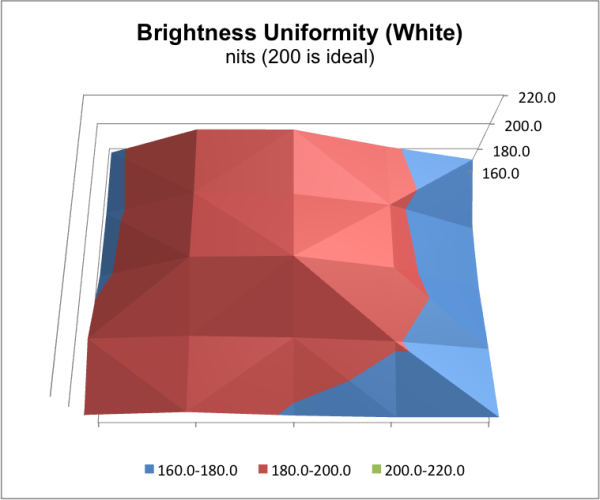
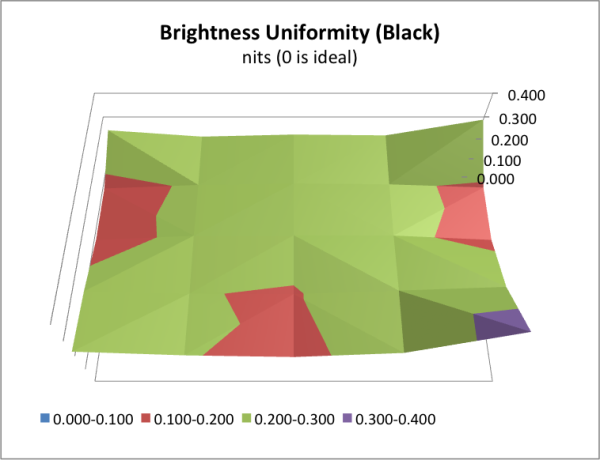
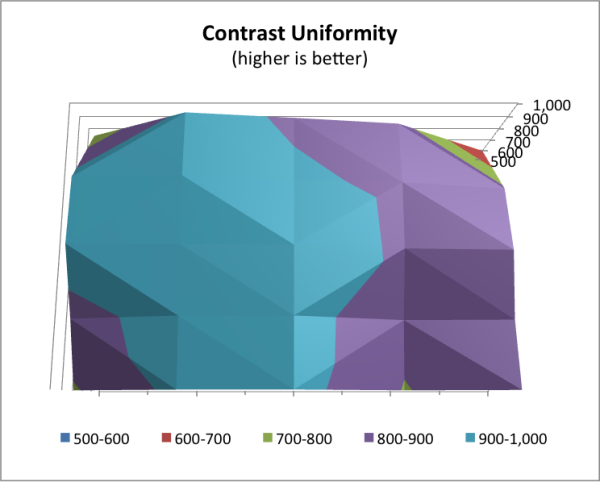
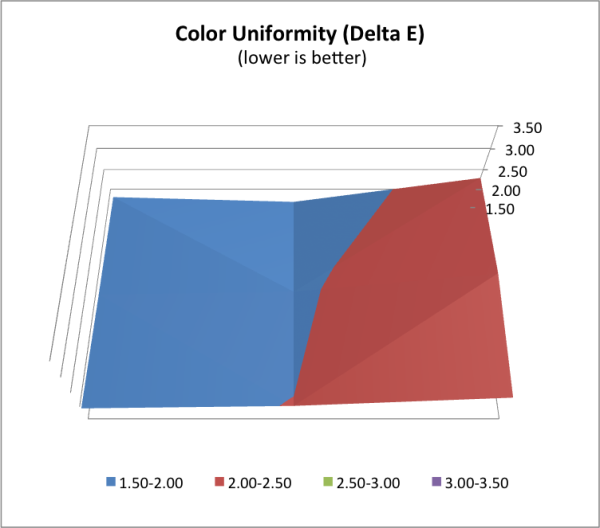
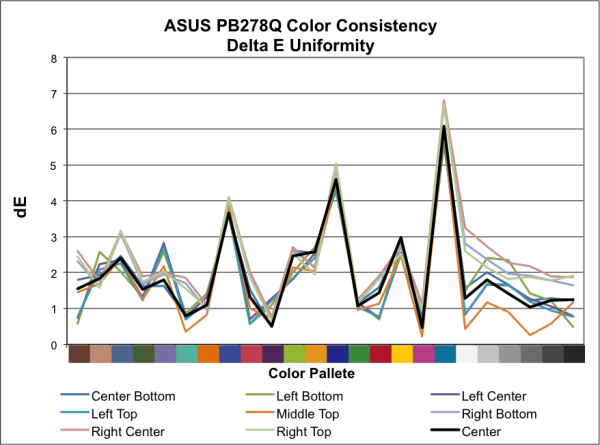








55 Comments
View All Comments
Olaf van der Spek - Wednesday, November 21, 2012 - link
HP ZR2740w has low input lag and light AG as well and is more widely available.http://www.tftcentral.co.uk/reviews/hp_zr2740w_v2....
extide - Tuesday, November 20, 2012 - link
HDMI v1.4 support!!!!!mczak - Wednesday, November 21, 2012 - link
It's actually the first time I've seen a monitor claim to support resolutions larger than 1920x1200 over hdmi, so this is indeed very nice.Of course you'll need newest generation graphic card to support it too, but it's about time for monitors...
keitaro - Tuesday, November 20, 2012 - link
Is there any word as to whether or not PLS will come in smaller sizes and resolution? 1080p? 1200p? And what about other PLS users? That 27" resolution is nice and all but doesn't fit well in the triple-monitor budget of mine. Would be nice if other companies will jump on the PLS bandwagon to add variety to the IPS and eIPS market.staticx57 - Tuesday, November 20, 2012 - link
The Galaxy Tab 10.1 uses a PLS panel for what it's worth. PLS certainly does more than a 27" panel if that's what you are wondering.Death666Angel - Tuesday, November 20, 2012 - link
Samsung S24A850D has a 1200p resolution @ 24". They have more PLS stuff as well.Avalon - Tuesday, November 20, 2012 - link
I think there may be an error in the processing lag/total response time graphs. The Asus is stated as 28.2ms on the processing lag chart and that looks roughly accurate on the total response time chart above it.But, the Dell U2412m on the total response time chart looks to be about 16.5ms, but in the processing lag chart is listed as 29.5ms. Not sure if this is an error?
JarredWalton - Tuesday, November 20, 2012 - link
See above: the U2412M was listed twice; this is fixed now with the slower U2713HM correctly labeled. Thanks!wsaenotsock - Tuesday, November 20, 2012 - link
refresh rate?dcollins - Tuesday, November 20, 2012 - link
Dell is selling the U2713HM for $559 right now. At that price, this monitor doesn't have a chance.Dell makes great monitors: I have a 19" that I got in 2005 and it still works fine, though the color has deteriorated slightly over time.